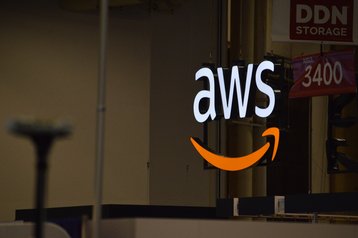Amazon reported a strong second quarter across both its ecommerce and cloud services divisions.
Overall, the company brought in $134.4 billion in revenues, up 11 percent over last year. Of that, net income was $6.7bn, up from a loss of $2bn a year ago - although that included the markdown on its investment in electric vehicle company Rivian.
For Amazon Web Services, revenues grew 12 percent to $22.1bn. In percentage terms, this represents a slowdown over last quarter's growth of 16 percent and growth of 22 percent for all of last year. But the company was quick to note that, as revenues get larger, even small percentage increases mean billions in extra revenue.
"As the economy has been uncertain over the last year, AWS customers have needed assistance cost optimizing to withstand this challenging time and reallocate spend to newer initiatives that better drive growth," Amazon CEO Andy Jassy said in an earnings call. "And while customers have continued to optimize during the second quarter, we've started seeing more customers shift their focus towards driving innovation and bringing new workloads to the cloud."
Jassy said that AWS growth had stabilized and that he was "bullish on the growth of AWS over the next several years." Over the past year, Jassy laid off 27,000 Amazon employees, including in AWS.
One area of growth in the cloud is generative AI, with rivals Google and Microsoft saying that it will lead to more data center capex spend.
At Amazon, it's no different. The company will spend "slightly more than $50 billion" on capital expenditure for 2023, down from $59bn last year. However, that includes fulfillment and transportation costs. While the company didn't break that down, in February 2022 it said that 40 percent of capex went to AWS (30 percent to warehouses, 25 percent to transportation).
It's not known how close those percentages track to 2023, but CFO Brian Olsavsky said that "we expect fulfillment and transportation capex to be down year-over-year, partially offset by increased infrastructure capex to support growth of our AWS business, including additional investments related to generative AI and large language model efforts."
CEO Jassy added that there is a "pretty significant amount of capital expense in the AWS business for large language models and for generative AI." He added: "One of the interesting things in AWS - and this has been true from the very earliest days - which is the more demand that you have, the more capital you need to spend because you invest in data centers and hardware upfront and then you monetize that over a long period of time.
"I would like to have the challenge of having to spend a lot more in capital in generative AI because it will mean that customers are having success and they're having success on top of our services. But I think that that's our best estimate right now on that capital expense, and we'll update it if we find it's different."
For the last quarter, Google reported $6.89bn in capex spend, primarily on data centers and compute hardware. Microsoft's capex hit $10.7bn, with the company saying that it expected to increase its spend every quarter, partially due to generative AI.




